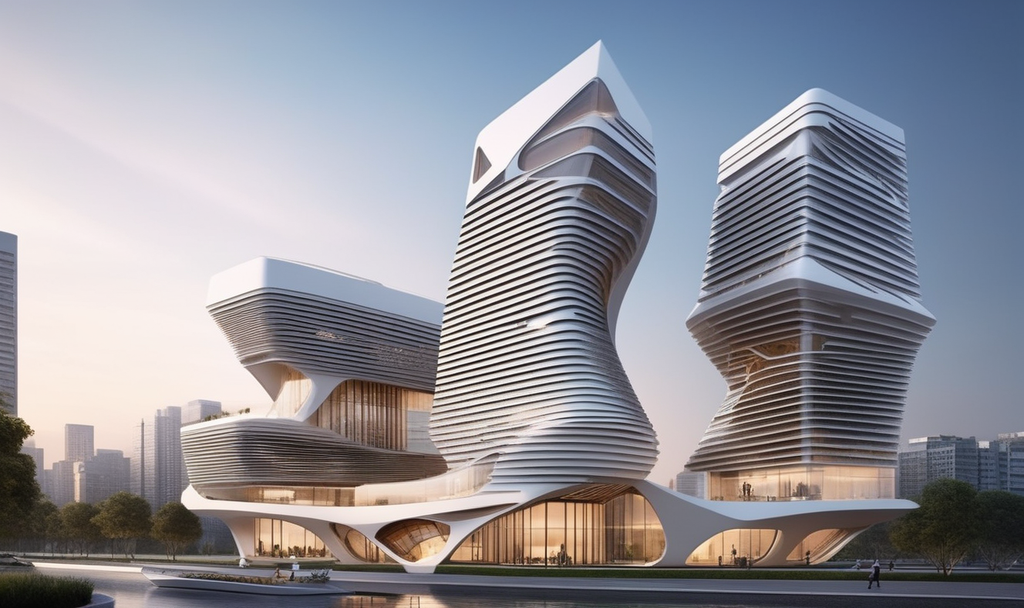In the ever-evolving realm of architecture, technology stands as a silent but influential partner, shaping the way structures are conceived, designed, and built. Modern architecture, with its avant-garde aesthetics and innovative approaches, has seamlessly woven technology into its fabric. This marriage has not only redefined the possibilities of design but has also ushered in an era where functionality and aesthetics coalesce in unprecedented ways.
I. The Evolution of Modern Architecture
Before delving into the symbiosis between technology and modern architecture, it’s essential to understand the evolution of the latter. Modern architecture emerged in the late 19th and early 20th centuries as a rebellion against the ornate styles of the past. Architects sought a break from tradition, embracing clean lines, geometric shapes, and a focus on functionality. This paradigm shift laid the foundation for a harmonious integration of technology in the architectural process.
II. Technological Ingenuity: A Catalyst for Innovation
A. Digital Design Tools: Redefining the Drawing Board
The advent of digital design tools has revolutionized the way architects conceptualize and refine their ideas. Computer-aided design (CAD) software has replaced traditional hand-drawn plans, enabling architects to create intricate 3D models with precision. This not only expedites the design phase but also allows for a level of complexity and detail previously unattainable.
B. Building Information Modeling (BIM): A Holistic Approach
In the realm of modern architecture, Building Information Modeling (BIM) has emerged as a game-changer. BIM goes beyond mere 3D modeling; it integrates information about a building’s entire life cycle, from design and construction to operation and maintenance. This holistic approach enhances collaboration among architects, engineers, and contractors, fostering a seamless workflow.
III. Sustainable Solutions: Green Technology in Modern Architecture
A. Smart Materials: A Fusion of Form and Function
Modern architecture embraces sustainability as a core principle, and technology plays a pivotal role in achieving this goal. The utilization of smart materials, which respond dynamically to environmental conditions, allows buildings to adapt and optimize energy consumption. From self-regulating facades to materials that harvest solar energy, the marriage of technology and architecture is propelling sustainable design to new heights.
B. Energy-efficient Systems: From Passive to Active
The integration of energy-efficient systems has become a hallmark of modern architectural projects. Passive design elements, such as strategic orientation and natural ventilation, are complemented by active systems like solar panels, geothermal heating, and advanced insulation. These technological interventions not only reduce the environmental impact but also contribute to long-term cost savings for building owners.
IV. The Impact of 3D Printing on Construction
A. Redefining Building Processes
The emergence of 3D printing in construction is a testament to the transformative power of technology. This innovative approach allows for the rapid and cost-effective production of building components. From intricate facades to modular structures, 3D printing opens up new possibilities for architects to experiment with form and function, challenging the conventional norms of construction.
B. Customization and Complexity
One of the remarkable aspects of 3D printing in modern architecture is the ability to customize designs with unparalleled precision. Architects can now create intricate and complex structures that were previously unfeasible using traditional construction methods. This shift towards customization not only enhances the aesthetic appeal of buildings but also reflects a departure from the uniformity often associated with older architectural styles.
V. Minimalism and the Role of Technology
A. Simplifying Complexity
Modern architecture often embraces minimalism, a design philosophy that emphasizes simplicity and functionality. Technology enables architects to achieve this aesthetic by streamlining complex processes. Minimalist structures, with their clean lines and uncluttered spaces, are made possible through advancements in materials, construction techniques, and digital design tools.
B. The Elegance of Efficiency
In the realm of modern architecture, efficiency is not solely confined to energy use; it extends to the entire design and construction process. Technology allows architects to optimize every aspect of a project, eliminating unnecessary elements and focusing on what is essential. This pursuit of efficiency aligns seamlessly with the principles of minimalism, resulting in buildings that exude elegance through simplicity.
VI. Challenges and Ethical Considerations in the Integration of Technology
While the marriage of technology and modern architecture brings forth numerous benefits, it is not without its challenges and ethical considerations. The reliance on digital tools raises concerns about data security and privacy, as well as the potential for job displacement in traditional construction sectors. Architects must navigate these issues with a keen awareness of the ethical implications, ensuring that technological advancements contribute positively to the industry.
If you have any question about this article, please contact us …
VII. Conclusion: A Continuum of Innovation
In conclusion, the role of technology in modern architecture is not just about enhancing the design process; it’s about redefining the very essence of what is possible. From digital design tools and sustainable solutions to 3D printing and minimalism, technology is a driving force behind the evolution of architectural aesthetics and functionality. As we stand on the cusp of a new era, the dynamic interplay between technology and modern architecture promises a continuum of innovation that will shape the skylines of the future.

